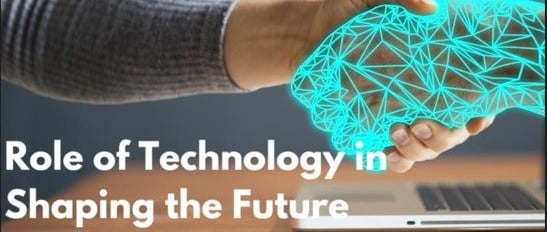Do You Know the Latest Technology Shaping Our Future
#DoYouKnow, #LatestTechnology, #FutureTech, #AIRevolution, #SmartInnovation, #TechTrends2025, #DigitalFuture
TECH & SCIENCE
7/24/20253 min read


Do you know that we are living in the most technologically advanced era in history? From artificial intelligence (AI) that can think like humans to quantum computers that solve problems in seconds, the latest technologies are revolutionizing how we live, work, and communicate. In this article, we’ll explore the latest technology trends in 2025, how they work, and their impact on our future.
1. Artificial Intelligence (AI) and Machine Learning (ML)
AI is no longer just a concept from science fiction—it’s everywhere!
What is AI? It’s a technology that enables machines to mimic human intelligence, such as learning, decision-making, and problem-solving.
Examples of AI today:
Chatbots like ChatGPT.
Self-driving cars.
AI-based medical diagnostics.
Future Impact: AI is transforming industries like healthcare, finance, and education by automating tasks and predicting outcomes.
Machine Learning (ML)
ML, a branch of AI, allows machines to learn from data without being explicitly programmed.
Recommendation systems on Netflix or YouTube are examples of ML in action.
In 2025, generative AI (like creating images, videos, and music) is one of the biggest trends.
2. Quantum Computing
Do you know that quantum computers can perform calculations millions of times faster than traditional computers?
Companies like Google, IBM, and Microsoft are racing to develop quantum processors.
Applications: Drug discovery, solving complex problems in seconds, and improving cybersecurity.
Why it matters: Quantum technology could revolutionize industries like medicine, weather forecasting, and finance.
3. 5G and 6G Technology
The rollout of 5G has already changed how we use the internet—faster speeds, lower latency, and better connectivity.
Impact on daily life: Smooth video streaming, real-time gaming, and advanced IoT devices.
6G (expected by 2030): Promises speeds 100 times faster than 5G, enabling futuristic tech like holographic calls and autonomous cities.
4. Internet of Things (IoT)
The Internet of Things refers to a network of connected devices that communicate and share data.
Examples: Smart homes (Alexa, Google Nest), wearable health trackers, and connected cars.
Future Potential: In smart cities, IoT could help reduce energy usage, improve traffic management, and monitor pollution in real time.
5. Extended Reality (AR, VR, and MR)
Do you know that Augmented Reality (AR) and Virtual Reality (VR) are creating new digital worlds?
AR: Adds digital elements to the real world (e.g., AR filters on Instagram or Snapchat).
VR: Fully immerses you in a simulated environment (e.g., VR gaming).
Mixed Reality (MR): Combines real and virtual elements for interactive experiences.
Applications: Education (virtual classrooms), medicine (virtual surgeries), and tourism (virtual travel experiences).
6. Robotics and Automation
Robots are no longer limited to factories—they’re entering homes, hospitals, and even space.
Humanoid robots like Tesla’s Optimus are being developed to assist with everyday tasks.
Automation in industries: From assembly lines to delivery drones, robots are increasing efficiency.
Healthcare robotics: Surgical robots like Da Vinci Surgical System enable precise, minimally invasive surgeries.
7. Biotechnology and Genetic Engineering
The fusion of biology and technology is revolutionizing healthcare.
CRISPR technology: Scientists can now edit genes to prevent or cure genetic diseases.
Lab-grown organs and meat: Reducing the need for animal farming and organ transplants.
Personalized medicine: Treatments tailored to your DNA for better results.
8. Renewable Energy and Green Tech
As climate change becomes a bigger challenge, technology is driving solutions:
Solar power innovations: Transparent solar panels that can be installed on windows.
Wind energy advancements: Floating wind farms.
Electric vehicles (EVs): Companies like Tesla, BYD, and Tata are leading the charge with affordable EVs.
Green hydrogen: A cleaner alternative to fossil fuels.
9. Space Technology and Exploration
Space technology is advancing at a rapid pace:
SpaceX’s Starship aims for interplanetary travel, starting with Mars.
Satellite internet: Starlink is bringing internet connectivity to remote areas.
Lunar missions: NASA’s Artemis program plans to return humans to the Moon by 2026.
Private companies are also working on space tourism.
10. Cybersecurity and Blockchain
As digital technology grows, so does the risk of cyberattacks.
Blockchain technology (the backbone of cryptocurrencies like Bitcoin) is now being used for secure transactions and supply chain management.
Cybersecurity innovations: AI-powered threat detection and quantum encryption will keep data safer.
11. The Rise of Smart Wearables
Smartwatches, fitness trackers, and AR glasses are becoming more advanced:
Devices like the Apple Vision Pro and Meta Quest blend digital content into daily life.
Future wearables may monitor blood sugar levels, stress, and even detect diseases early.
12. The Future of Technology
The next decade will see the merging of these technologies:
AI-powered robots and smart assistants in every home.
Fully autonomous vehicles that don’t require human drivers.
Brain-computer interfaces (like Neuralink) allowing humans to control devices with their thoughts.
More sustainable and eco-friendly tech to fight climate change.
Conclusion
Do you know that technology is evolving so fast that what’s cutting-edge today might be obsolete tomorrow? From AI to quantum computing, the innovations of 2025 are shaping a future where humans and machines work together more closely than ever. Embracing these changes will not only make life easier but also open new opportunities for growth and creativity.
Knowledge
Empowering minds with reliable educational content daily.
Newsletter Signup
© 2025 DoYouKnow. All rights reserved.
Stay Ahead of the Trends – Join Our Newsletter
